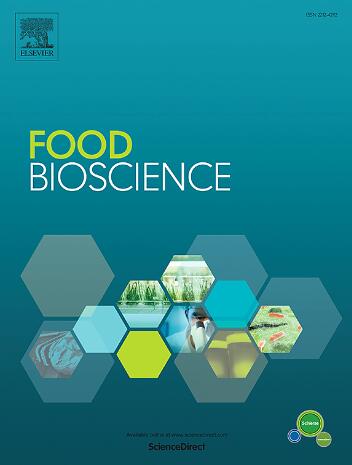膳食中的酚类化合物可调节肠道微生物群:在健康和疾病中的作用
IF 4.8
1区 农林科学
Q1 FOOD SCIENCE & TECHNOLOGY
引用次数: 0
摘要
酚类化合物(PCs)与肠道微生物群之间的相互作用机制受到广泛关注。排除吸收和代谢方面的个体差异,多酚类化合物的生物利用率和稳定性取决于肠道微生物群的组成和短链脂肪酸的含量,并产生一系列酶水解、分裂和还原反应。同时,多糖可用作益生元,改变固醇菌/类杆菌,减少有害细菌,丰富产生短链脂肪酸(SCFAs)的细菌,从而保护和调节肠道屏障和免疫系统。在代谢性疾病、心血管疾病、神经系统疾病和癌症等多种疾病中,多糖可通过不同途径减轻临床症状和逆转病情,如主要通过脂多糖(LPS)/类托尔受体 4/Nuclear Factor Kappa B 信号通路促进代谢性炎症。SCFAs 和 LPS 也可作为 PCs 与肠道微生物群相互作用的两个主要生物标志物。根据最近的研究结果,本文对多氯联苯的生物转化和肠道微生物群的相互作用机制进行了全面综述。这将为选择和食用具有益生菌活性的多糖提供一些视角。本文章由计算机程序翻译,如有差异,请以英文原文为准。
Phenolic compounds in dietary target the regulation of gut microbiota: Role in health and disease
Mechanisms of interaction between phenolic compounds (PCs) and gut microbiota have received widespread attention. Excluding individual differences in absorption and metabolism, the bioavailability and stability of PCs depend on the composition of the gut microbiota and the short-chain fatty acid content, producing a series of enzymatic hydrolytic, splitting and reduction reactions. Meanwhile, PCs can be used as prebiotics, and alter the Firmicutes/Bacteroidetes, reduce harmful bacteria and enrich short-chain fatty acids (SCFAs)-producing bacteria, thereby protecting and regulating the intestinal barrier and immune system. In various diseases, such as metabolic disease, cardiovascular diseases, neurological diseases and cancer, PCs can reduce clinical symptoms and reverse the disease through different pathways, such as facilitating metabolic inflammation mainly through the Lipopolysaccharide (LPS)/Toll-like receptor 4/Nuclear Factor Kappa B signaling pathway. SCFAs and LPS can be also used as two major biomarkers for the interaction PCs and gut microbiota. Based on recent findings, a comprehensive review of PCs biotransformation and gut microbiota interaction mechanisms is summarized. It will provide some perspective on selecting and consuming PCs with probiotic activity.
求助全文
通过发布文献求助,成功后即可免费获取论文全文。
去求助
来源期刊

Food Bioscience
Biochemistry, Genetics and Molecular Biology-Biochemistry
CiteScore
6.40
自引率
5.80%
发文量
671
审稿时长
27 days
期刊介绍:
Food Bioscience is a peer-reviewed journal that aims to provide a forum for recent developments in the field of bio-related food research. The journal focuses on both fundamental and applied research worldwide, with special attention to ethnic and cultural aspects of food bioresearch.
 求助内容:
求助内容: 应助结果提醒方式:
应助结果提醒方式:


